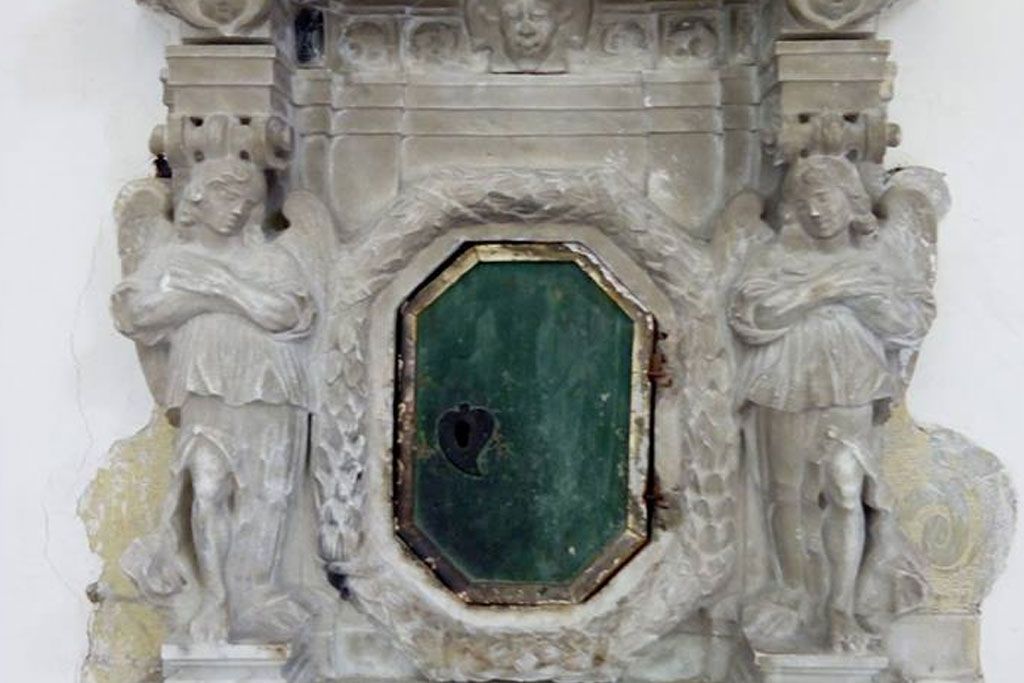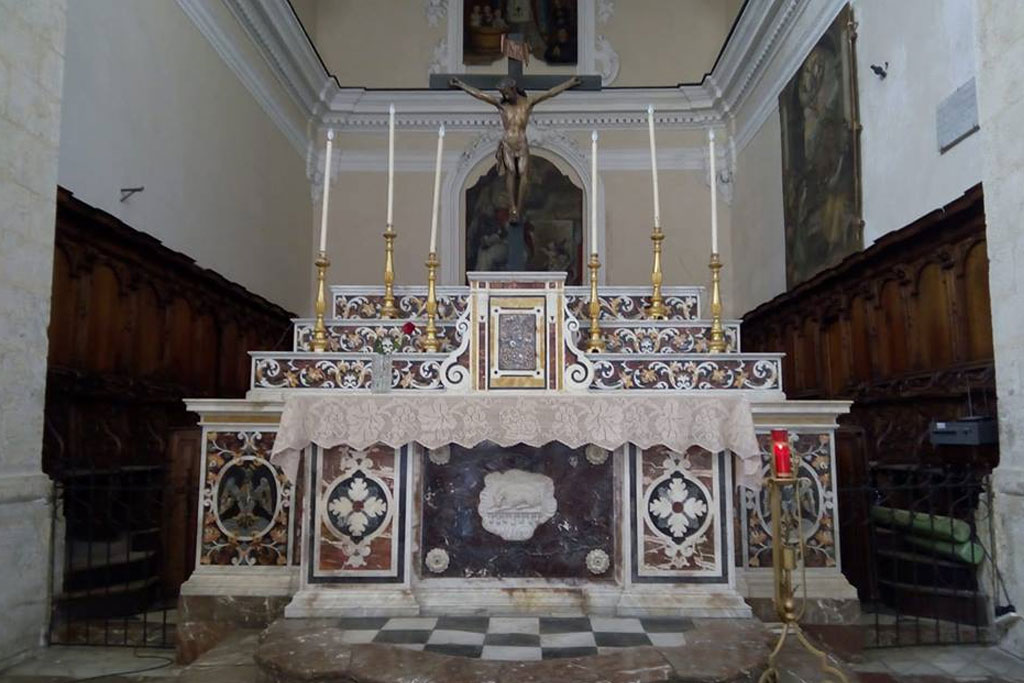It was built in 1434 at the behest of King Alfonso of Aragon following his victory over the troops of Louis III of Anjou, an event that Piaggia believes was invented. Dedicated to St James the Apostle, Patron Saint of Spain, it still retains its original 15th-century structure. It was the city's Mother Church until 1616, when the Cathedral, built inside the Castle, was inaugurated.
With a sober Renaissance appearance that has not been altered by later additions, it has a single-order façade tightened by stone cantonments and crowned by a triangular attic with a clock and stuccoes; the door, still in seventeenth-century style, is adorned with slender Corinthian columns and surmounted by a niche with a statuette of the titular saint, all decorated with volutes and scrolls: the inscription dates the construction to 1712. The simple rectangular window is decorated with modest friezes. The secondary door on Via Medici is flanked by elegant Doric pilasters on a decorated base with a broken tympanum enclosing the inscription: a scroll decorated with volutes bears the dedication to the titular saint.

